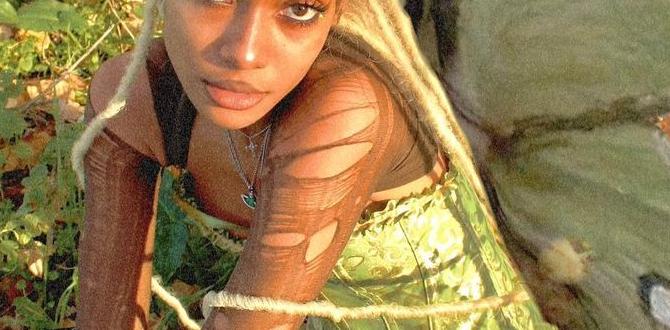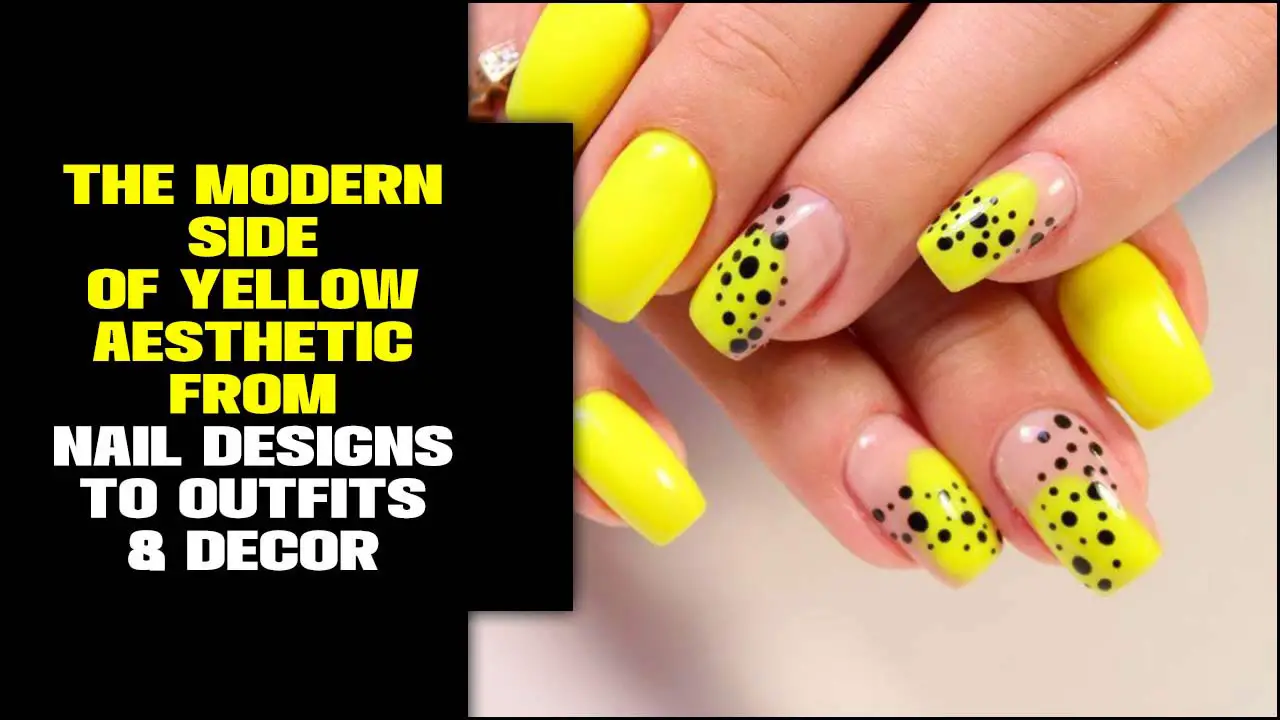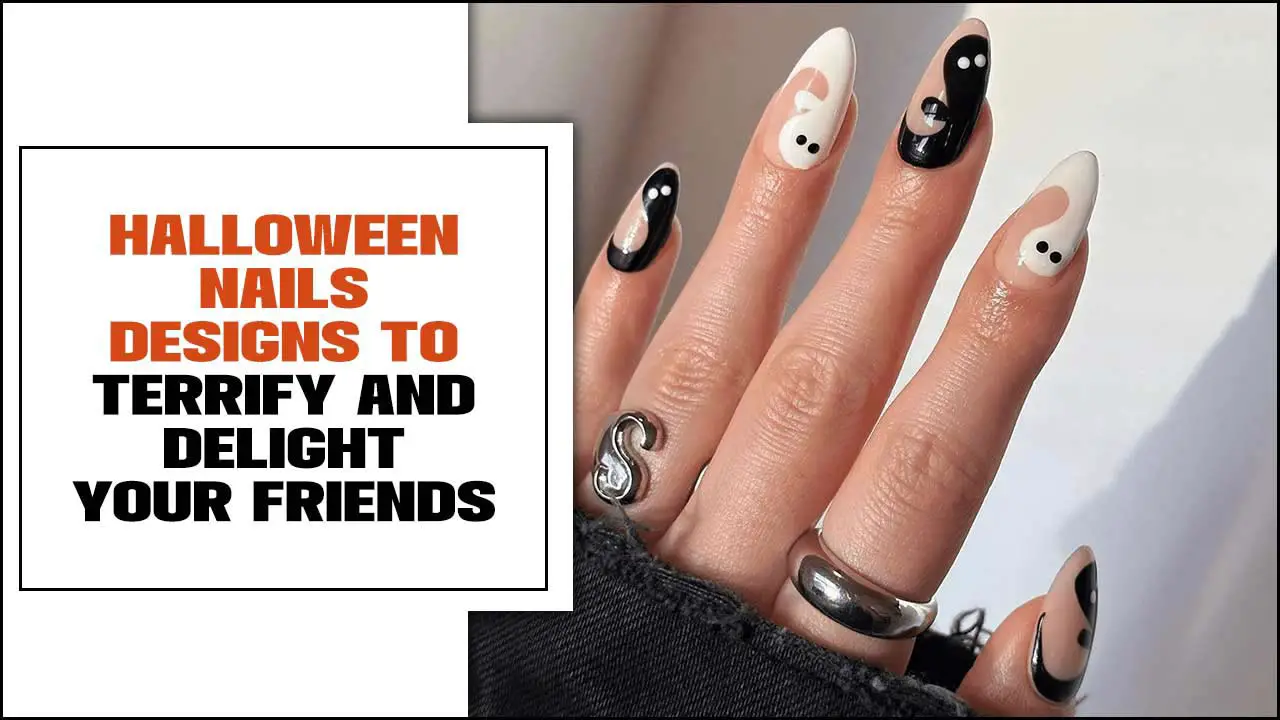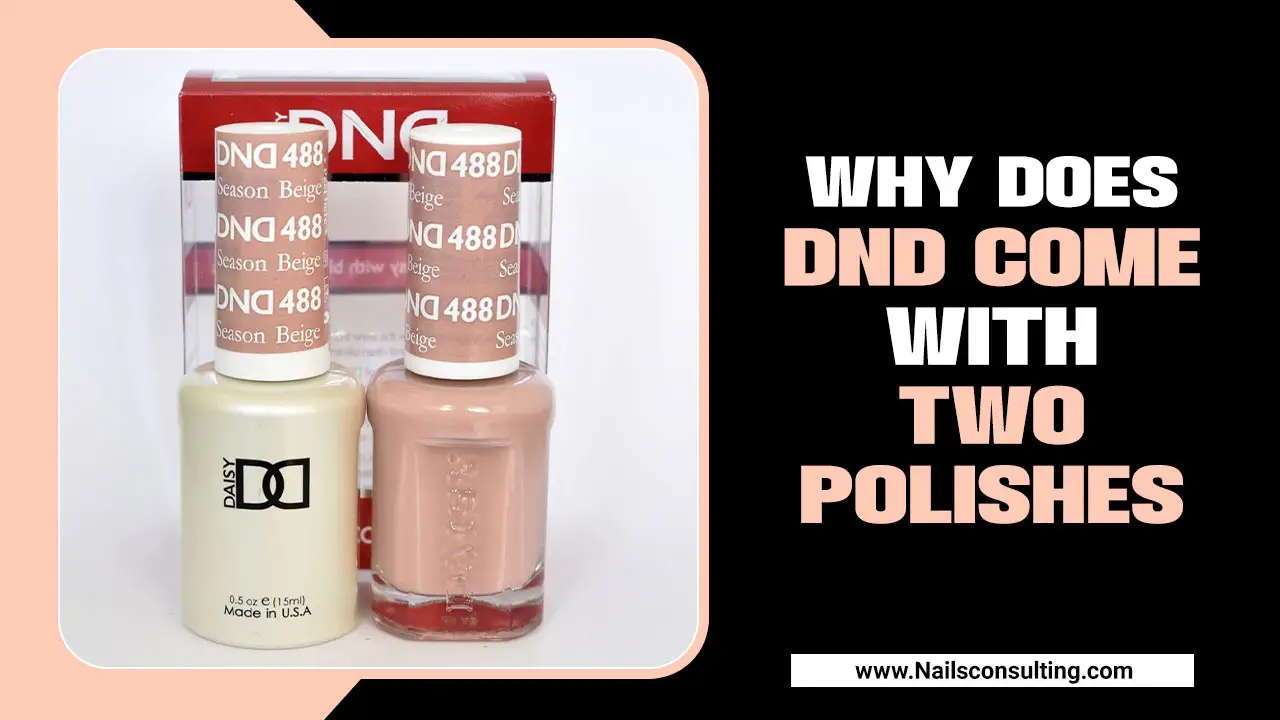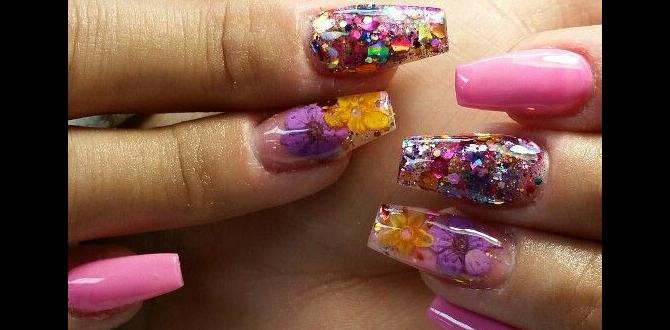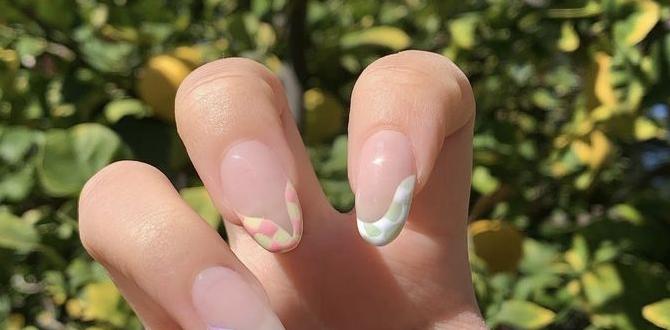Quick Summary:
Wildflower nail designs are a beautiful and achievable way to express your personal style! With simple techniques and the right tools, you can create stunning floral manicures at home. This guide offers proven, essential tips and step-by-step instructions that make creating these delicate designs easy for everyone.
Dreaming of painted petals and leafy vines adorning your fingertips? Wildflower nail designs bring the beauty of nature right to your nails, offering a fresh and vibrant way to express yourself. Sometimes, though, recreating these delicate looks can feel intimidating, leaving you unsure where to start. Don’t worry! With a few simple tricks and the right approach, anyone can master gorgeous wildflower manicures. Get ready to unleash your inner artist and create stunning floral designs that bloom all year round.
Unlocking the Charm of Wildflower Nail Designs
Wildflower nail designs are more than just a trend; they’re a celebration of natural beauty and effortless style. They evoke a sense of bohemian freedom and a connection to the outdoors, making them a perfect choice for those who love a bit of floral flair. What makes them so special?
- Versatility: From tiny, delicate blooms to fuller, more abstract arrangements, wildflower designs can adapt to any nail shape and length.
- Seasonless Appeal: While they often remind us of spring and summer, a well-executed wildflower design can brighten up any season.
- Personal Expression: The freedom in creating these designs allows for endless customization, reflecting your unique taste and creativity.
- Achievability: Contrary to popular belief, many stunning wildflower designs are surprisingly easy to create, even for beginners!
At Nailerguy, my mission is to make nail art fun and accessible. I believe everyone can create beautiful nails, and wildflower designs are a fantastic starting point. Let’s dive into how you can achieve these charming looks!
Essential Tools for Your Wildflower Nail Art Journey
Before you can paint a single petal, having the right tools will make all the difference. You don’t need a professional salon’s worth of equipment to create beautiful wildflower nail designs. Here’s what I recommend for beginners:
| Tool | Why You Need It | Beginner Tip |
|---|---|---|
| Base Coat | Protects your natural nails from staining and helps polish adhere better. | Apply a thin, even layer and let it dry completely. |
| Nail Polish in Various Colors | Your palette! Think pastels, brights, and earthy tones for flowers and leaves. | Start with 3-5 colors that work well together. |
| Fine-Tipped Nail Art Brushes | Essential for drawing delicate lines, petals, and leaf shapes. | A set with different tip sizes is great. A liner brush (long, thin bristles) and a dotting tool are key. |
| Dotting Tools | Perfect for creating small flower centers or simple dots that mimic petals. | Use the smaller end for tiny dots and the larger end for bigger ones. |
| Top Coat | Seals your design, adds shine, and makes your manicure last longer. | A quick-dry top coat is a lifesaver! |
| Rubbing Alcohol or Nail Polish Remover | For cleaning brushes and fixing small mistakes. | A little goes a long way for brush cleaning. |
| Paper Towels or a Palette | To mix colors or wipe excess polish from your brush. | A piece of parchment paper also works as a disposable palette. |
Having these basic items will set you up for success. Remember, you can always build your collection as you get more comfortable with different techniques!
Step-by-Step: Creating Simple Wildflower Nail Designs
Ready to get your hands bloomin’? These steps will guide you through creating some easy and beautiful wildflower looks. We’ll start with a few different approaches so you can find what works best for you.
Method 1: The Dotty Daisy/Flower Power
This is a fantastic and super easy method for creating simple, cute flowers. It’s all about strategic dots!
- Prep Your Nails: Start with clean, dry nails. Apply your favorite base coat and let it dry completely. Then, paint your nails with your chosen background color. Think soft pastels, milky whites, or even a sheer nude for a natural look.
- Create the Flower Centers: Dip a small dotting tool into a contrasting color polish (yellow or white are classic for daisies). Make a few small, tight dots in the center of where you want your flower to be. For a fuller flower, you might make a small cluster of 3-5 dots.
- Add the Petals: Now, using a fine-tipped brush or another dotting tool, carefully place smaller dots around your center dots to form petals. For daisies, simple white dots around a yellow center work beautifully. You can also use different colors for a more whimsical flower. Don’t worry about perfection; slightly uneven dots add to the “wildflower” charm!
- Add Greenery (Optional): With a fine liner brush dipped in green polish, draw tiny V-shapes or short curved lines next to your flowers to represent leaves. A tiny dab of green can also form a stem.
- Seal the Deal: Once everything is completely dry, apply a generous layer of top coat. This will smooth out any texture from the polish and protect your beautiful wildflower designs.
Method 2: The Painterly Petal Technique
This method uses a brush to create softer, more fluid petals that look almost hand-painted.
- Prep Your Canvas: Just like before, apply your base coat and your desired background color. Ensure it’s fully dry.
- Load Your Brush: Dip a fine-tipped nail art brush (a liner brush or a small detail brush) into your desired flower color. You want a good amount of polish on the brush, but not so much that it’s dripping.
- Form the Petals: Gently touch the tip of your brush to the nail where you want the flower to begin. Then, with a light, sweeping motion, pull away to create a petal shape. Think of it like drawing a teardrop or a C-shape.
- Build Your Flower: Repeat this motion, placing petals around a central point. You can overlap them slightly or leave small gaps. A simple cluster of 5-6 petals can create a lovely bloom. For more depth, you can use two shades of the same color, applying one color for the initial petals and a slightly lighter or darker shade for a few more strategically placed ones.
- Add Details: Use a tiny dot of a different color for the flower’s center, or use a fine brush to add a few small lines or dots. Small leaves can be added with a green liner brush using similar sweeping strokes.
- Finish Strong: Apply your top coat generously once all the polish is dry.
Method 3: The Stamp & Dotted Accent
This advanced-beginner technique combines stamping with hand-painted dots for unique effects.
- Set the Stage: Base coat and background polish applied and dried.
- Stamp Your Outline: Use a wildflower stamp from a nail art stamping plate. Apply stamping polish to the plate, scrape off the excess, and quickly transfer the image to your nail using a stamper. This gives you a delicate floral outline.
- Fill or Accent with Dots: Once the stamped image is dry, use a small dotting tool to fill in the flower with small dots of color, mimicking Method 1. Alternatively, you can use the dots to accent parts of the stamped design or add tiny centers.
- Add Leaves: A few strokes with a green liner brush can add leaves around your stamped/dotted flowers.
- Seal: Top coat is essential to protect both the stamp and the painted details.
Remember to clean your brushes thoroughly after each use. A good tip is to wipe them on a paper towel and then dip them in rubbing alcohol to remove any residual polish.
Color Palettes to Inspire Your Wildflower Nails
Choosing the right colors can significantly impact the overall feel of your wildflower nail design. Here are some proven palettes that work beautifully:
Soft & Serene Pastels
- Background: Milky white, pale lavender, soft mint green, baby pink.
- Flowers: Light blue, blush pink, lilac, peach, creamy yellow.
- Accents: White for centers, light green for leaves.
- Vibe: Delicate, dreamy, perfect for spring.
Vibrant & Bold Blooms
- Background: Deep navy, forest green, charcoal gray, or even a contrasting bright color.
- Flowers: Bright fuchsia, sunny yellow, electric blue, coral red, vibrant orange.
- Accents: Black or deep jewel tones for centers, dark green for leaves.
- Vibe: Energetic, eye-catching, great for making a statement.
Earthy & Natural Tones
- Background: Beige, muted terracotta, olive green, cream.
- Flowers: Burnt orange, mustard yellow, deep burgundy, muted rose, dusty blue.
- Accents: Brown or dark gold for centers, brownish-green for leaves.
- Vibe: Grounded, bohemian, effortlessly chic.
Monochromatic Magic
- Background: White or a very pale shade of your chosen color.
- Flowers: Varying shades and tones of one color (e.g., light pink, medium pink, deep rose).
- Accents: White or a very dark shade of your color for centers, deep green or black for leaves.
- Vibe: Sophisticated, modern, surprisingly effective.
Tips for Longevity and Flawless Application
Creating a beautiful wildflower design is only half the battle; keeping it looking fresh is the other! Here are essential tips to ensure your nail art lasts and looks its best:
- Proper Nail Prep: Clean nails free of oils are crucial. Use a nail polish remover to wipe each nail before applying polish. This removes any natural oils that could prevent polish from adhering.
- The Power of Base Coat: Never skip the base coat! It creates a smooth surface for polish, prevents staining (especially with dark colors), and helps your manicure last longer.
- Thin Layers are Key: Apply polish and top coat in thin, even layers. Thick coats take longer to dry and are more prone to smudging and chipping.
- Seal Those Edges: When applying your top coat, gently brush it over the free edge (the tip) of your nail. This “sealing” action helps prevent chipping.
- Be Patient with Drying Time: Resist the urge to touch your nails too soon! Even quick-dry top coats require a few minutes. If you’re doing detailed art, let each layer dry sufficiently before adding the next.
- Avoid Water Immediately After: Try to avoid prolonged contact with water (like washing dishes without gloves) for at least a few hours after your manicure. This allows the polish to fully cure.
- Gloves are Your Friend: For household chores, especially those involving water or cleaning chemicals, always wear rubber gloves. They protect your beautiful nail art from damage.
- Cuticle Oil for Maintenance: Once your nails are fully dry (after a day or two), applying cuticle oil daily can help keep your nails and the surrounding skin healthy. This prevents dryness and can indirectly help your polish last. For more on nail health, check out resources from the Mayo Clinic on nail care.
By following these simple tips, you can significantly extend the life of your gorgeous wildflower nail designs!
Troubleshooting Common Wildflower Nail Art Issues
Even the most experienced nail artists run into hiccups! Here’s how to fix some common problems you might encounter with wildflower nail designs:
| Problem | Solution |
|---|---|
| Smudged Design | If it’s a fresh smudge, you can sometimes gently use your pinky finger or a cuticle pusher to smooth it out, or carefully dab a tiny bit of polish over it with a fine brush. For older smudges, a clear top coat can sometimes help blend it. If it’s really bad, it might be time for a do-over on that nail! |
| Brush Strokes Too Visible | Ensure you’re using thin layers of polish. If strokes are very apparent, let the layer dry, then apply a thicker layer of top coat to even it out. For future attempts, try using a smoother polish or practice your brush strokes on a piece of paper. |
| Colors Bleeding Together | This usually happens when one layer isn’t dry before adding the next. Let each color dry thoroughly. If you’re painting over a dry base color, use a very light touch with your next layer. A quick-dry top coat can also help seal layers faster. |
| Dots Spreading or Looking Gloppy | You might be using too much polish on your dotting tool or brush. Wipe off excess polish on the edge of the bottle opening before applying to the nail. Also, ensure your base color is completely dry; a tacky surface can cause dots to spread. |
| Brushes Getting Clogged with Polish | Clean your brushes immediately after use with nail polish remover or rubbing alcohol. Store them flat or upright with the bristles at the top to prevent polish from hardening in the ferrule (the metal part). |
| Uneven Paint Application on Background | Apply polish in thin, even strokes. Start with a stripe down the middle, then one on each side. A good base coat helps create a smoother surface. If it’s still uneven, one more thin coat of your background color after minimal drying time can fix it. |
FAQ: Your Wildflower Nail Design Questions Answered!
Here are answers to some common questions beginner nail artists have about creating wildflower designs:
Q1: Do I really need special nail art brushes?
A1: While you can try to make do with toothpicks or bobby pins, specialized nail art brushes are highly recommended! They offer much better control for delicate lines and shapes. A fine liner brush and a few dotting tools are a fantastic starting point.
Q2: Can I do wildflower designs on short nails?
A2: Absolutely! Short nails are perfect for smaller, more delicate wildflower designs. Tiny clusters of dots or single small flowers can look incredibly charming and are much easier to manage on shorter lengths.
Q3: How do I make my painted flowers look less like blobs?
A3: Practice makes perfect! Focus on creating distinct petal shapes. For dotting methods, use smaller amounts of polish on your tool. For brush methods, experiment with different pressure and sweeping motions. Overlapping gently and adding a tiny dot for the center can define the flower.
Q4: What’s the best way to clean my nail art brushes?
A4: After each use, wipe the brush on a lint-free pad or paper towel to remove excess polish. Then, dip the bristles in acetone-based nail polish remover or rubbing alcohol. Gently swish the brush around, and wipe it clean on a fresh pad. Store them dry.
Q5: My designs chip quickly. What am I doing wrong?
A5: Ensure you’re using a good base coat and a quality top coat. Sealing the free edge of your nail with your top coat is crucial for preventing chips. Also, try to avoid prolonged exposure to water immediately after application.
Q6: Can I use regular craft acrylic paints for nail art?
A6: While some artists do use acrylic paints, they are not specifically designed for nails and can sometimes lift or react with top coats. It’s best to stick with nail polishes or specialized nail art paints designed for use with top coats and on nails. This ensures better longevity and a smoother finish.
Beyond the Basics: Taking Your Wildflower Designs Further
Once you’re comfortable with the basic techniques, you can start exploring more advanced options. Consider:
- Adding Shimmer: Incorporate glitter polish for flower centers or use a glitter top coat for a whimsical sparkle.
- Ombre Backgrounds: Create a beautiful gradient background before adding your flowers for an extra pop.
- 3D Elements: With acrylic gel or small acrylic beads, you can add dimension to centers or petals.
- Abstract Florals: Don’t be afraid to move away from strict representations. Abstract swashes of color with minimal


